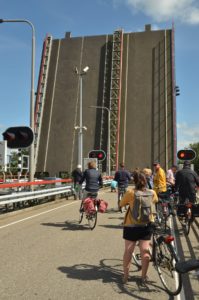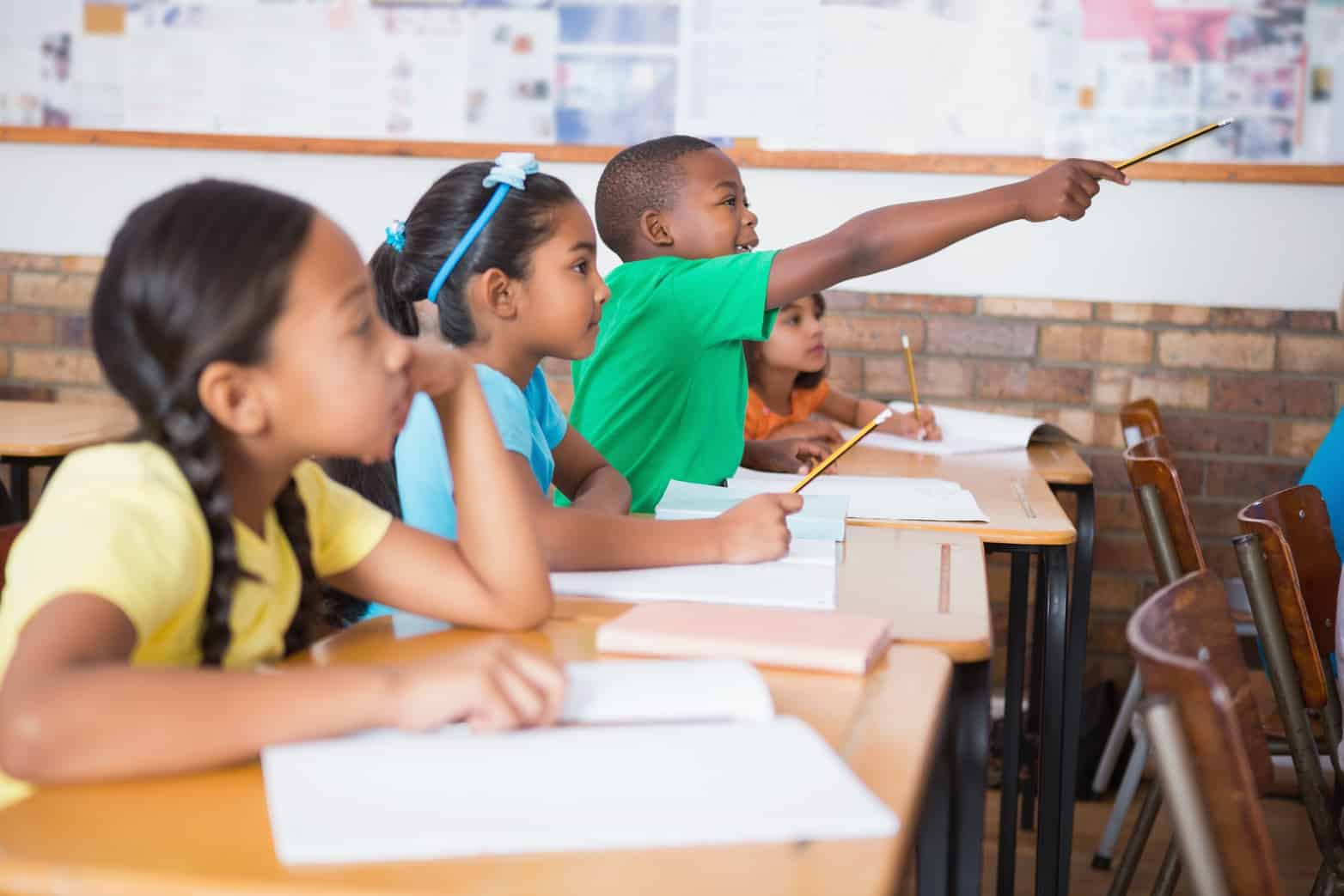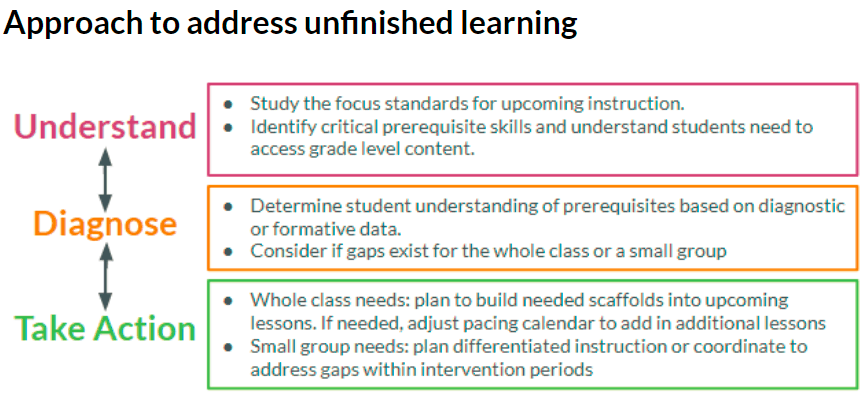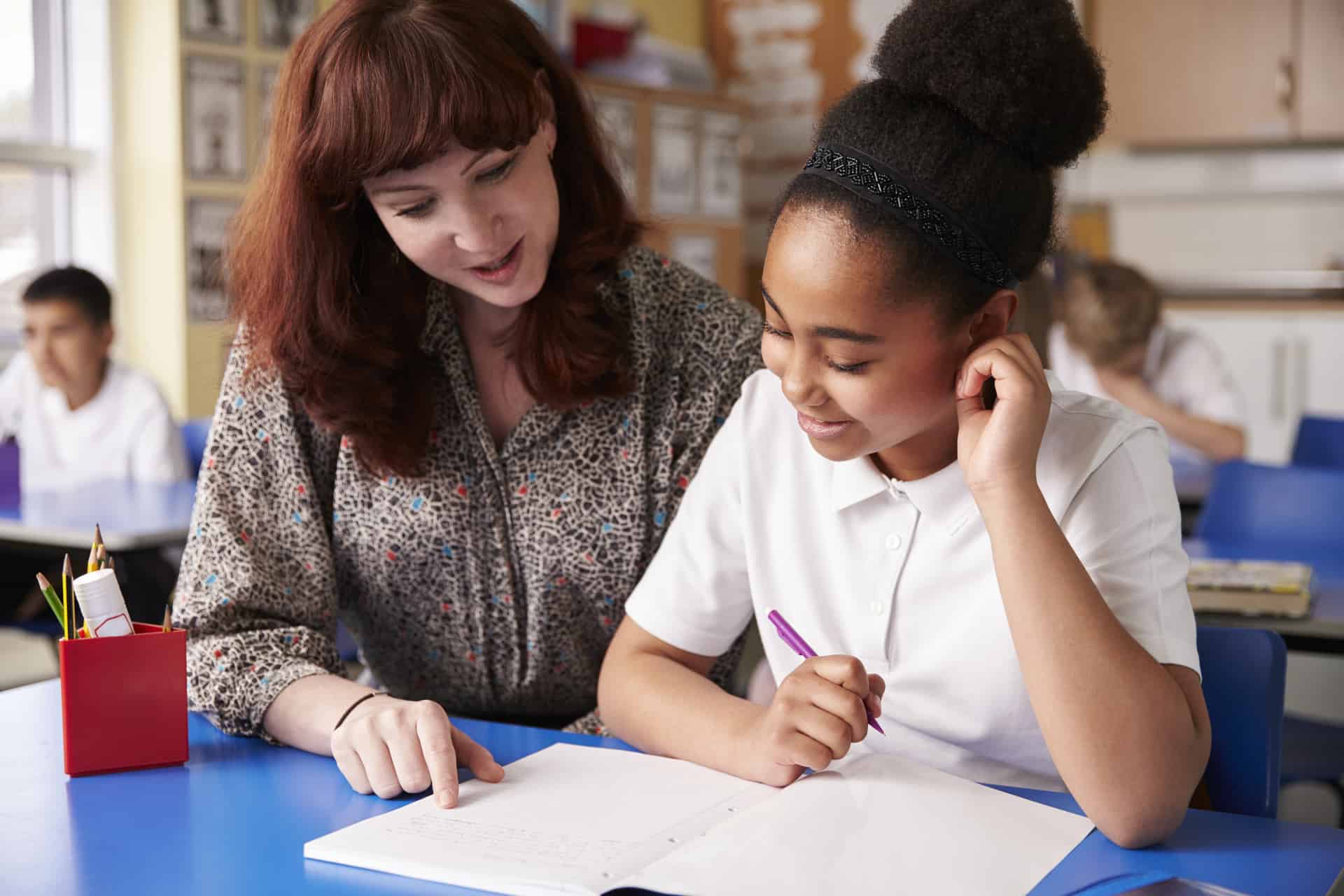As a teacher, I had an understanding of the grade-level math content I was supposed to teach and the belief that students’ new learning had to build from their prior understanding. But the harsh reality was that most of the students in my class were several years below grade level, and I only had one school year to try to catch them up. At the time, I felt like I had to choose between two pathways — to move forward with grade-level work despite students’ gaps or halt grade-level instruction to build prerequisite knowledge.
Neither of these would provide equitable learning for my students.
In my current role as Director of Math Professional Learning at the Achievement Network (ANet), I’ve learned that I wasn’t the only teacher facing this challenge. In fact, it’s one of the most widespread challenges we hear from our school partners. And that’s why I’ve partnered with Astrid Fossum from Student Achievement Partners (SAP) over the past year to think more about what it means to address students’ unfinished learning in the context of grade-level work.
What is unfinished learning?
Unfinished learning refers to any prerequisite knowledge or skills that students need for future work that they don’t have yet. Previously, I’ve used the term gap or weakness to mean the same thing, but I prefer unfinished learning because it seems to inspire action rather than focusing on student deficits.
Not all unfinished learning has the same effect on students’ ability to access grade-level content. In some cases, it will simply require more time or effort from students, similar to how road construction affects travel.
 For example, a student who is not yet fluent with multiplication (5.NBT.B.5) may need more time or support when solving real-world and mathematical problems involving area, surface area, and volume (6.G.A), but should still be given an opportunity to engage with these types of grade-level problems.
For example, a student who is not yet fluent with multiplication (5.NBT.B.5) may need more time or support when solving real-world and mathematical problems involving area, surface area, and volume (6.G.A), but should still be given an opportunity to engage with these types of grade-level problems.
This idea may be counterintuitive at first. Given the coherent nature of mathematics, I used to think that students couldn’t engage in grade-level work until they’d built all prerequisite skills. But now I see it differently — as an opportunity to help students “plug holes” or strengthen understanding.
The bridge is up!
On the other hand, there may be situations that require prerequisite knowledge for entry into a lesson or task. For example, a 7th grader needs to understand the concept of a ratio (6.RP.A.1) in order to analyze proportional relationships and use them to solve real-world and mathematical problems (7.RP.A). In a case where students lack the former, a teacher may insert one or more lessons to address the gap before moving into grade-level content.
To build on our driving analogy from earlier, we could use the example of a drawbridge being “up,” not allowing cars to pass until it is closed. In these cases, teachers will need to “close the bridge” before moving ahead with grade-level content so students can access new material in a meaningful way.
Over the past year, I’ve had a chance to explore examples of unfinished learning alongside teachers, and I’ve been surprised to see that cases where lack of the most critical prerequisite understanding actually prevents access to grade-level content are rare. Instead, far more common are situations where students can both engage in grade-level content and fill gaps simultaneously.
Given this, and the pacing challenges that arise when teachers halt grade-level instruction to teach content from prior grades, I’d encourage teachers to ask, “Is the bridge truly up?” before deciding how to support students.
The flowchart above summarizes an approach you can take to identify and address students’ unfinished learning when planning upcoming lessons or units. You may enter into this approach at different points, depending on when student gaps are identified, and you will likely cycle between the steps as you work with students, as the double arrows suggest.
As you work to understand the demands of the standards, it may be helpful to try solving problems that align to each standard yourself to help you anticipate areas where students may get stuck and to identify the most critical prerequisite knowledge. Additionally, the Coherence Map is a helpful tool to understand the progression of learning leading up to grade-level content, as illustrated on page 2 of this 5th grade example.
When possible, use data you already have to diagnose student understanding in order to save yourself time and avoid over-testing students. See what you can learn from classroom discussion, one-on-one conversations, and written work students complete as part of everyday instruction. If more information is needed, you may decide to administer a pre-assessment. Page 3 of this 6th grade example shows one teacher’s approach to diagnosing student understanding.
Let the data be your guide as you take action – with whom, when, and on what? Pages 4-6 of this 8th grade example show one teacher’s approach. During this phase, it’s important that students understand how the extra support connects to their own grade-level content. One teacher shared that she posts grade-level problems on the board at the beginning of instruction, explaining that they will return to them after brushing up on a few skills.
There are no silver bullets
As I’ve looked into this topic over the past few years, I’ve realized that there are no silver bullets. There is no one program or solution to catching kids up who are several years behind. Instead, it takes deep content knowledge, increased time, and strategic planning to meet students where they are and accelerate their path forward.
While the 3-step approach Understand-Diagnose-Take Action will not magically “finish” students’ unfinished learning, it can provide some structure to a challenge many teachers continue to face in the classroom. Reactions to the approach have been positive, and we’ve seen some early successes from teachers who have used it. If you’re a teacher working to address unfinished learning in the context of grade-level work, please share your ideas and examples by sending us an email or Tweeting at us: @achievethecore and @AchievementNet!




















I agree 🙂
I agree. I regularly address student’s unfinished learning across all subject areas. From writing to mathematics, there are always gaps that need to be addressed before the introduction of new grade level skills/content. Taking the time to close the gaps in understanding, enables students to make critical connections and allows comprehension and skill mastery to take place.
I love this question – “Is the bridge truly up?” – and agree that very often the answer is no, students can engage in grade-level work and “fill gaps” simultaneously. What makes this difficult is that, as you are saying, actual “gaps” are rare. ‘Unfinished learning’ is helpful re-naming, but more often than not when students are declared not “ready” to cross a bridge into grade-level territory, more often than not, there is a PILE of stuff that is blocking them, not a gap without a bridge. The pile consists of all of the previous efforts to ‘teach’ the content- all the different ways/words/tricks/steps students have been asked to try/read/hear/follow that don’t make sense to the student, year after year, teacher after teacher, textbook after textbook. So crafting productive learning experiences for students is not always about setting them up to cross OVER empty gaps into grade-level territory; learning often requires getting THROUGH piles — mountains– of accumulated clutter. Slow excavation to clear a path is hard and careful work; sometimes you need dynamite to build a tunnel. The approach you are recommending here – Understand, Diagnose, Take Action – should work for building tunnels through piles; recognizing that we’re dealing with piles, not gaps, could be helpful for planning actions.
Everything you said is on point!
I also agree with the comments Vinci Daro and Ray Bubel left.
I would like to create a classroom culture where I can meet my students “where they are and accelerate their path forward“.
This article was beneficial as myself and so many educators struggle to fill the gaps. I think it is important to note that you really have to look at your data and make sure you are differentiating when needed. Not every student may need the same thing especially in regards to unfinished learning.
I am looking forward to “meeting students where they are and accelerating their path forward”.
The term, ” unfinished learning” is a great way to encourage my sp. ed students in my small group setting. I also like the idea to allow the data you have to guide you to help understand their needs and to diagnose also with observations. Not always having to pre-test will save valuable time for instruction.
Understand-Ddiagnossee-Take Action are key and not doing so much pre-testing will save time.
Unfinished learning is a great way to encourage my students. Following the Understanding, diagnose and take action are great steps to follow.
1) The SAP or Student Achievement Partners is utilized to address unfinished learning.
2) Unfinished learning refers to prerequisite skills that students need for the future.
3) Teachers feel the need to “close the bridge” before moving onto grade-level content.
Questions: 1) What do we do when face with pacing challenges as teachers?
2) What do we do to help kids who fall behind the curriculum map?
Take away thought: Provide differentiated resources, materials, and teaching methods for teachers to help with pacing challenges.
As a PE teacher I always use a scaffolded approach to teaching because I have students with all levels of physical abilities.
Not in all situations does the concrete foundation need to be laid first before the new material is covered. In many situations, the work can be simultaneous…filling in gaps while progressing forward. “Closing the bridge” in its entirety might not be necessary. Perhaps sometimes the students can make the small jump across.
In the article when they explained how to consider the “big picture” it affirmed for me the way we should look at reaching our students. The approach to address unfinished learning is key to getting to know your students’ needs and how to move them.
I truly loved the idea of thinking about unfinished learning as a road…construction vs the bridge. It is something I want to be sure to ask myself each time.
I have used many of the methods outlined here when I taught second-grade. I will now be teaching 4th grade math for the first time, and this has reminded me that I will have to delve deeply into the standards of my new grade-level to have the knowledge to assess and diagnose my students correctly then build effective and efficient interventions while continuing to teach grade-level content. The sample 5th grade lesson was a great example of how to help students move forward with grade level content while still helping them understand prerequisite knowledge that they may be lacking. Seeing how the teacher used the fraction number line in the problem to help the student visualize the concept of adding fractions with different denominators really helped me to understand a new way to do this.
Loved this article and agree on adding in what they missed.
Unfinished learning is always a challenge for me. I was so happy to learn that I should use the approach of engaging my students in grade-level content and activities to fill in unfinished learning.
The term “Unfinished Learning ” seems to inspire action rather than focusing on students deficits.
I believe going over prerequisite content before delving into grade level content has been beneficial within my classroom thus far. Nevertheless I must allow students to both engage in grade-level content and fill gaps at the same time.
Yes! Present grade-level material to push the below level students. They will learn more this way because they will be practicing foundational skills while working on grade level material. Foundational skills are always embedded in grade level material.